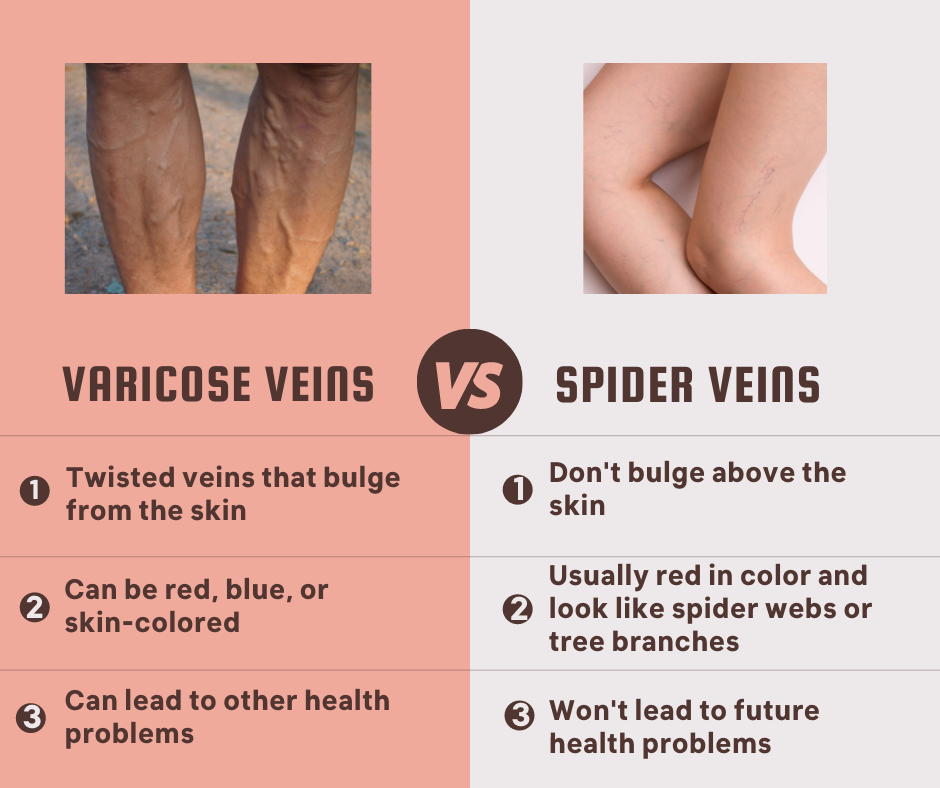When to Worry about Varicose Veins
Varicose veins are a common problem that affects nearly 30% of the adult population.
They can range from being a cosmetic issue to a more severe condition that requires medical attention, such as blood clots. In this blog post, we will give you more insight so you can decide when to seek medical attention.
Understanding Varicose Veins
What are varicose veins?
Varicose veins are a condition where the veins become enlarged and twisted on the skin's surface. They show themselves when the vein's valves that help blood flow back to the heart fail to work correctly, leading to blood pooling and swelling, similar to a one-way street. Varicose veins can appear in any part of the body, but they occur mostly in the legs and feet.
Some common signs of varicose veins are:
Bulging veins that are blue or purple in color
Swollen, achy legs with a heavy feeling
Muscle cramps in your legs
Itchy, dry, or thin skin over the varicose veins
Restless legs or legs that feel tingly or numb
Painful throbbing or burning sensation
What risk factors contribute to varicose veins?
Several factors can lead to varicose veins, including:
Genetics
Having a family history of varicose veins increases your risk of developing this condition.
Age
As you get older, your veins lose elasticity, causing valves to weaken and fail.
Gender
Women are more likely than men to develop varicose veins due to hormonal changes and pregnancy.
Obesity
Being overweight or obese puts pressure on your veins and increases your risk of developing varicose veins.
Standing or sitting for long periods of time
Standing or sitting for prolonged periods, especially long work hours, also puts pressure on the veins.
What are the differences between varicose veins and spider veins?
The biggest difference is that spider veins are not cause for concern and are simply cosmetic. In contrast, varicose veins can lead to future health problems.
When to Monitor Your Varicose Veins
If you notice early stage varicose vein symptoms
The early signs of varicose veins are often subtle, with symptoms such as itching, aching, or throbbing in the affected area. You may also notice a slight discoloration or swelling of the skin. As the condition progresses, the veins become more visible and may bulge or twist, and the skin may become more discolored and thickened. If left untreated, varicose veins can lead to complications such as venous ulcers or blood clots.
Swelling and discoloration are early signs of varicose veins
When to Worry about Your Varicose Veins
If you experience severe symptoms
Most varicose veins are not a cause for immediate concern. However, you should seek medical attention if you experience the following:
Severe pain and swelling in one or both legs
Sudden increase in swelling or redness around the varicose vein
The skin over the vein is warm, tender, and sore
The vein feels hard or lumpy
Varicose vein self-care
Compression socks
These provide gentle pressure to help blood flow more efficiently and reduce swelling.
We are partnered with RCG Medical to provide you with a selection of stockings for both men and women.
Lifestyle changes
Exercise, weight loss, and avoiding standing or sitting for prolonged periods can improve symptoms.
Elevate your legs
If you suffer from varicose veins, elevating your legs may be a simple and effective way to reduce pain and discomfort. Elevating your legs above your heart can help to improve blood flow and reduce swelling in the affected areas. It's especially beneficial to elevate your legs for 15-30 minutes several times throughout the day. Whether you're sitting or lying down, find a comfortable position and prop your legs up on a pillow or other cushion.
Treatment options
If you have troublesome varicose veins that are painful and affecting your daily life, you should look into treatment at MIMIT Health. Common treatments for varicose veins include:
Sclerotherapy
This involves injecting a solution into the affected vein to seal the vein shut, redirecting the blood into healthier veins.
Varithena
This FDA-approved injectable foam treatment is minimally invasive, targeting problem veins and shrinking them until they are absorbed by the body. Varithena helps to reduce the appearance of varicose veins, ease discomfort, and improve overall circulation.





